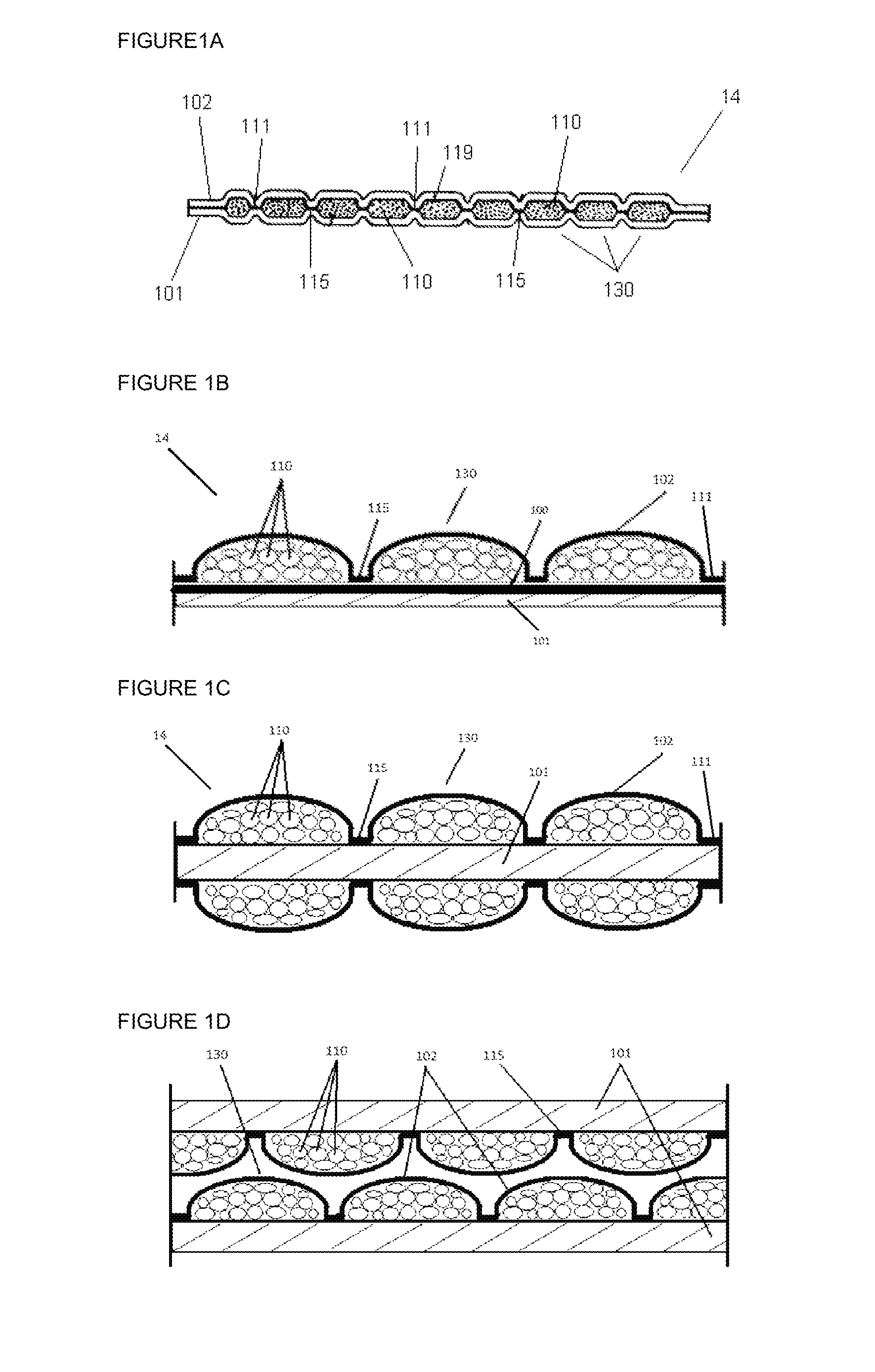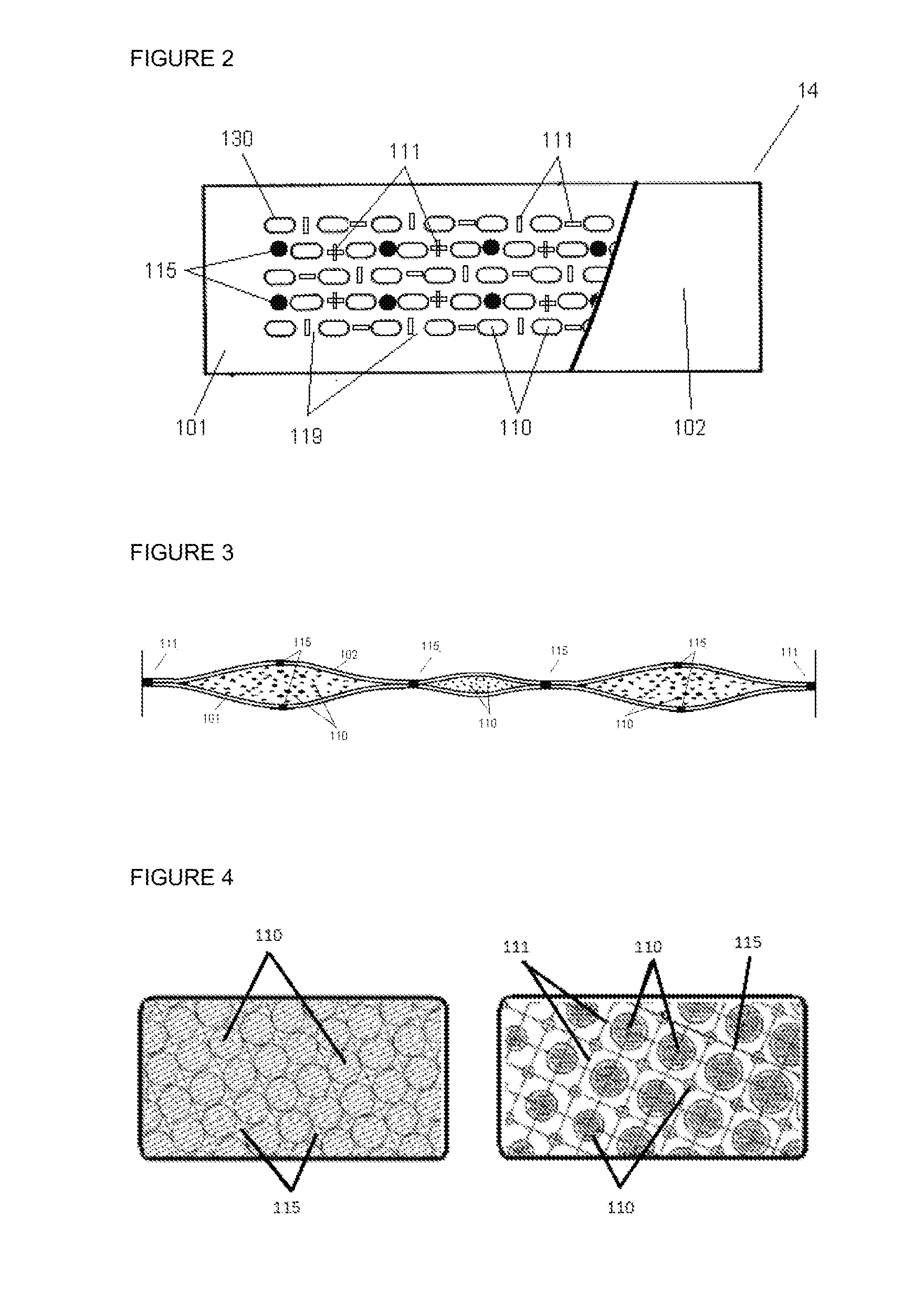Absorbent structure
a technology absorbent article, which is applied in the field of absorbent article, can solve the problems of loss of functional performance characteristics, not necessarily good at absorbing and distributing liquid when the absorbent article is actually being used, and the absorbent article is typically quite fluffy and bulky. , to achieve the effect of excellent fluid management, less amount, and excellent fluid management of absorbent polymer material
- Summary
- Abstract
- Description
- Claims
- Application Information
AI Technical Summary
Benefits of technology
Problems solved by technology
Method used
Image
Examples
Embodiment Construction
[0039]The present invention relates to an absorbent structure for use in absorbent products, such as coffee pads, disposable body warmers, sheet formed detergent articles, filter material, insulation material, make-up pads, anti-septic wads, and preferably absorbent articles from the personal hygiene industry such as but not limited to feminine hygiene garments, baby diapers and pants, adult incontinence garments, various absorbent holders, liners, towels, inserts and the like; and to a method and manufacturing of the same.
[0040]Unless otherwise defined, all terms used in disclosing the invention, including technical and scientific terms, have the meaning as commonly understood by one of ordinary skill in the art to which this invention belongs. By means of further guidance, term definitions are included to better appreciate the teaching of the present invention.
[0041]As used herein, the following terms have the following meanings:
[0042]“A”, “an”, and “the” as used herein refers to ...
PUM
| Property | Measurement | Unit |
|---|---|---|
| Fraction | aaaaa | aaaaa |
| Mass | aaaaa | aaaaa |
| Mass | aaaaa | aaaaa |
Abstract
Description
Claims
Application Information
 Login to View More
Login to View More - R&D
- Intellectual Property
- Life Sciences
- Materials
- Tech Scout
- Unparalleled Data Quality
- Higher Quality Content
- 60% Fewer Hallucinations
Browse by: Latest US Patents, China's latest patents, Technical Efficacy Thesaurus, Application Domain, Technology Topic, Popular Technical Reports.
© 2025 PatSnap. All rights reserved.Legal|Privacy policy|Modern Slavery Act Transparency Statement|Sitemap|About US| Contact US: help@patsnap.com



